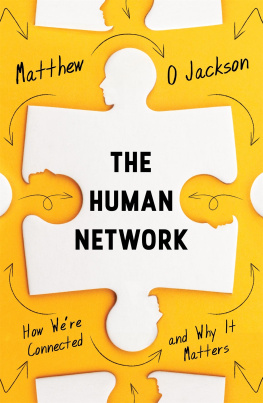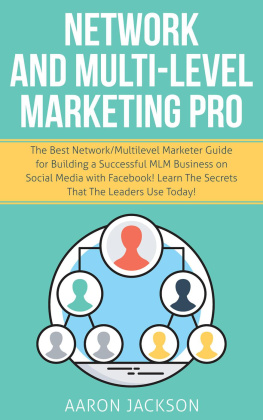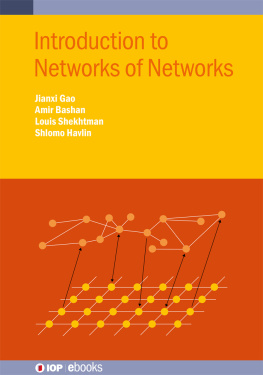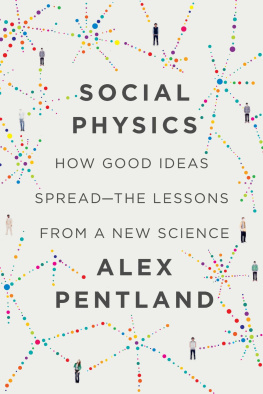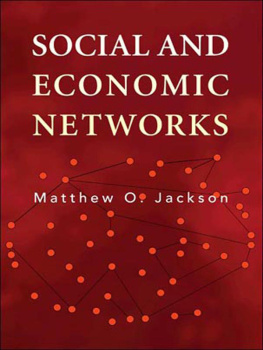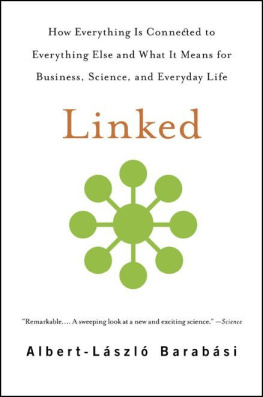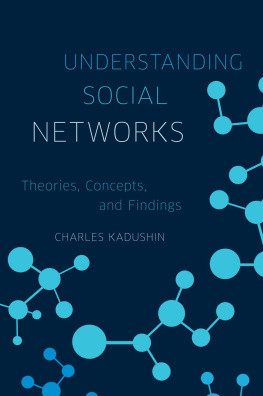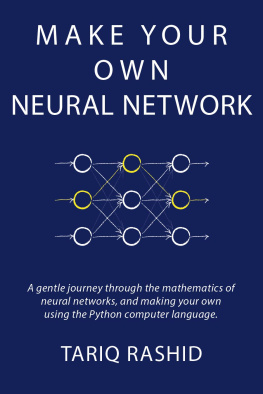Contents
Guide
THE HUMAN NETWORK
ABOUT THE AUTHOR
Matthew O. Jackson is the William D. Eberle Professor of Economics at Stanford University (where he received his PhD in 1988), an external faculty member of the Santa Fe Institute, and a fellow of the Canadian Institute for Advanced Research. He is a member of the National Academy of Sciences, a fellow of the American Academy of Sciences, a fellow of the Econometric Society, a Game Theory Society Fellow, and an Economic Theory Fellow. He has received the Social Choice and Welfare Prize, the John von Neumann Award from Rajk Laszlo College, the Berkeley Electronic Press Arrow Prize for Senior Economists, and a Guggenheim Fellowship. He teaches an online course on social and economic networks, and co-teaches (with Kevin Leyton-Brown and Yoav Shoham) two online game-theory courses, which together have reached more than a million students. He is the author of Social and Economic Networks and Handbook of Social Economics.
THE
HUMAN
NETWORK
How Were Connected and Why It Matters
MATTHEW O. JACKSON

First published in the United States in 2019 by Pantheon Books, a division of Penguin Random House LLC, New York.
Published in trade paperback in Great Britain in 2019 by Atlantic Books, an imprint of Atlantic Books Ltd.
Copyright Matthew O. Jackson, 2019
The moral right of Matthew O. Jackson to be identified as the author of this work has been asserted by him in accordance with the Copyright, Designs and Patents Act of 1988.
All rights reserved. No part of this publication may be reproduced, stored in a retrieval system, or transmitted in any form or by any means, electronic, mechanical, photocopying, recording, or otherwise, without the prior permission of both the copyright owner and the above publisher of this book.
Grateful acknowledgment is made for permission to reprint images on the following pages: . Copyright 2007 by Elsevier B.V. Reprinted by permission of Elsevier B.V.
All other images created by the author.
Every effort has been made to trace or contact all copyright holders. The publishers will be pleased to make good any omissions or rectify any mistakes brought to their attention at the earliest opportunity.
10 9 8 7 6 5 4 3 2 1
A CIP catalogue record for this book is available from the British Library.
Trade paperback ISBN: 978 1 78649 020 9
E-book ISBN: 978 1 78649 021 6
Printed in Great Britain
Atlantic Books
An imprint of Atlantic Books Ltd
Ormond House
2627 Boswell Street
London
WC1N 3JZ
www.atlantic-books.co.uk
For Sally and Hal
CONTENTS
1. Introduction:
Networks and Human Behavior
2. Power and Influence:
Central Positions in Networks
4. Too Connected to Fail:
Financial Networks
5. Homophily:
Houses Divided
6. Immobility and Inequality:
Network Feedback and Poverty Traps
8. The Influence of Our Friends and
Our Local Network Structures
9. Globalization:
Our Changing Networks
THE HUMAN NETWORK
1 INTRODUCTION:
NETWORKS AND HUMAN BEHAVIOR
The More Things Change
In Globalization 1.0, which began around 1492, the world went from size large to size medium. In Globalization 2.0, the era that introduced us to multinational companies, it went from size medium to size small. And then around 2000 came Globalization 3.0, in which the world went from being small to tiny.
THOMAS FRIEDMAN, INTERVIEW IN WIRED
(AUTHOR OF THE WORLD IS FLAT)
O n December 17, 2010, Mohamed Bouazizi, a twenty-six-year-old street vendor in the dusty small city of Sidi Bouzid in central Tunisia, lit himself on fire. He did so as a desperate statement of outrage at the tyrannical government that had ruled Tunisia for more than two decades and repeatedly crushed any opposition. His family had long been outspoken against the government and he found himself regularly harassed by the local police. That morning, the police publicly humiliated him and confiscated his days produce. Mohamed had borrowed the money to buy his produce, and its loss was the last of many straws. Mohamed drenched himself in gasoline and burned himself alive in protest.
Decades ago, the several-thousand-person protest that quickly followed would have been the end of the story. Few outside of Sidi Bouzid would have even been aware that anything happened. However, videos of the aftermath of Mohamed Bouazizis self-immolation were impossible to contain and were quickly shared via social media and reported widely. News of the Tunisian and other governments oppression had already been spreading after confidential documents
Although the methods of communication were modern, ultimately it was a network of humans spreading news and outrage. What was new was how widely and quickly news could spread, and how people were able to coordinate their responses. But understanding what happened still boils down to understanding how news spreads between people and how their behaviors influence each other.
The size and ferocity of the resulting Tunisian protests toppled the government by mid-January. The insurgency had also spread to neighboring Algeria, and over the next two months erupted in Oman, Egypt, Yemen, Bahrain, Kuwait, Libya, Morocco, and Syria, and even Saudi Arabia, Qatar, and the United Arab Emirates. The successes and failures of the Arab Spring are open to debate. But the swift proliferation of protests throughout that part of the world was not only unprecedented but highlighted the importance of human networks in our lives.
As dramatic as recent changes in human communication have been, as Thomas Friedmans quote above indicates, the world has shrunk many times beforein the wake of: the printing press, the posting of letters, overseas travel, trains, the telegraph, the telephone, the radio, airplanes, television, and the fax machine. Internet technology and social media are only the latest chapter in the long history of changes in how people interact, at what distance, how quickly, and with whom.
Yet even as networks of interactions between humans change, much about them is enduring and predictable. Understanding human networks, as well as how they are changing, can help us to answer many questions about our world, such as: How does a persons position in a network determine their influence and power? What systematic errors do we make when forming opinions based on what we learn from our friends? How do financial contagions work and why are they different from the spread of a flu? How do splits in our social networks feed inequality, immobility, and polarization? How is globalization changing international conflict and wars?
Despite their prominent role in the answers to these questions, human networks are often overlooked when people analyze important political and economic behaviors and trends. This is not to say that we have not been studying networks, but instead that there is a chasm between our scientific knowledge of networks as drivers of human behavior and what the general public and policymakers know. This book is meant to help close that gap.
Each chapter shows how accounting for networks of human relationships changes our thinking about an issue. Thus, the theme of this book is how networks enhance our understanding of many of our social and economic behaviors.

